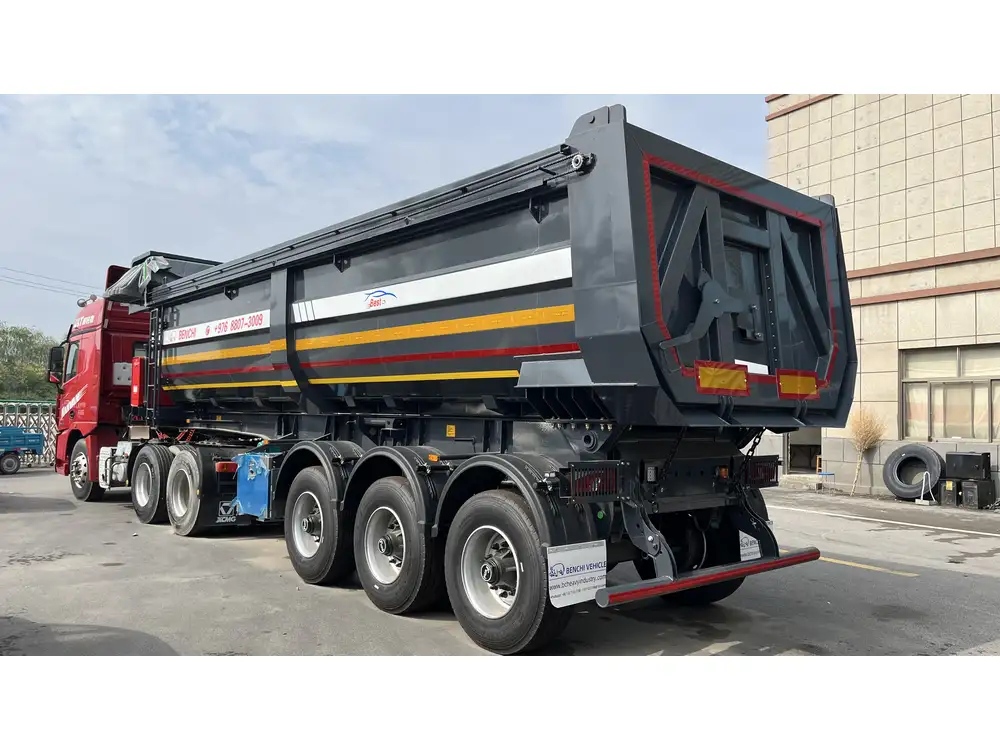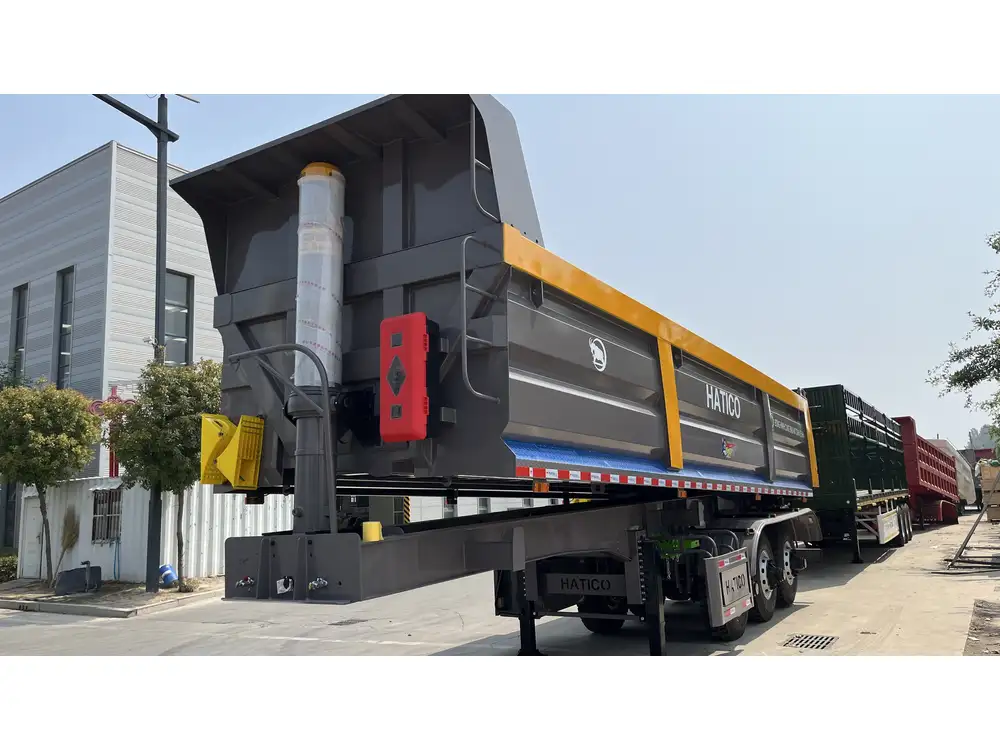Hauling a car on a flatbed trailer can seem daunting, particularly for those who have never undertaken such a task before. However, with the right knowledge, equipment, and precautions, it becomes a manageable operation. This guide discusses in detail the necessary steps, tips, and vital considerations that every individual or business should understand when transporting a vehicle on a flatbed trailer.
Understanding Flatbed Trailers
Flatbed trailers are an optimal solution for hauling cars, especially if the vehicle is inoperable or when traditional towing methods aren’t feasible. Understanding the different types of flatbed trailers is crucial before diving into the specifics of the hauling process.
Types of Flatbed Trailers
| Type | Description | Best Use Cases |
|---|---|---|
| Standard Flatbed | A flat, open trailer without sides. | Transporting various vehicle types. |
| Tilt Bed Trailer | The bed tilts down, creating a ramp. | Ideal for low-clearance vehicles. |
| Enclosed Flatbed | Covered trailer for added protection. | Hauling expensive or classic cars. |
| Gooseneck Trailer | Designed for heavy loads, attaches to the truck bed. | For extra stability with larger vehicles. |
Understanding these types enables you to select the right trailer for your specific vehicle and hauling requirements.

Preparing for the Haul
Before setting out on your journey, meticulous preparation is key to ensuring a safe and efficient vehicle transport. Here’s a structured approach to preparatory steps.
1. Assess Your Vehicle
- Condition Check: Ensure that the car is functioning to the best of its ability. Inspect for leaks, battery issues, or damaged wheels.
- Clearance Assessment: Measure the vehicle’s height and width to ascertain compatibility with the trailer and check for any potential obstructions during loading.
2. Choose the Right Equipment
- Flatbed Trailer: Choose based on your vehicle size and weight.
- Ratchet Straps: Essential for securing the vehicle.
- Loading Ramps: If your trailer isn’t a tilt bed, ensure that you have adequate ramps to load the car safely.

3. Safety Gear
- Gloves and Safety Glasses: Protect your hands and eyes during the loading and unloading process.
- Wheel Chocks: These prevent the trailer from rolling during loading.
Loading the Vehicle onto the Flatbed Trailer
Loading is a crucial phase where many potential mishaps can occur. Follow these structured steps for a seamless operation.
Step-by-Step Loading Process
Positioning the Trailer:
- Park the flatbed trailer on a level surface.
- Ensure that it’s aligned straight with the vehicle to avoid any awkward angles during loading.
Setting Up Ramps (if necessary):
- Securely position the loading ramps, ensuring they’re rated for your vehicle’s weight.
- Check for steep angles that could cause vehicle damage.
Loading the Car:
- Drive Slowly: If the car operates, drive it slowly onto the trailer. If not, push it gently using a winch.
- Guide Assistance: Have an individual at the rear to assist and guide during loading.
Securing the Vehicle:
- Use ratchet straps to tie down the vehicle. Always secure the front and rear, utilizing anchor points on the trailer.
- Adjust the straps to ensure they’re tight, eliminating any movement during transport.

Best Practices for Secure Loading
- Weight Distribution: Position the vehicle to maintain balance, keeping it slightly forward on the trailer.
- Avoid Overloading: Always check the load capacity of both the vehicle and the trailer to ensure safety standards are met.
Transporting the Vehicle Safely
Once the vehicle is loaded securely, it’s time to hit the road. Consider the following to maintain safety while hauling:
Driving Tips for Hauling
- Know the Trailer Dimensions: Be aware of your total vehicle/trailer length and height when navigating low overpasses or tight turns.
- Adjust Driving Speed: Reduce speed, as hauling can affect braking distance and maneuverability.
- Avoid Sudden Movements: Maintain smooth acceleration and deceleration, and steer gently to keep the vehicle stable.

Unloading the Vehicle
After arriving at your destination, unloading should be just as carefully orchestrated as loading. Here’s a breakdown of unloading procedures:
Step-by-Step Unloading Process
Prepare the Area:
- Ensure that the unloading area is cleared and free of obstructions.
- Set wheel chocks around the trailer’s wheels for stability.
Release the Straps:
- Carefully remove the ratchet straps, starting from the rear to avoid jerking the vehicle forward.
Using Ramps:
- For non-tilting trailers, place ramps securely once again.
- If using a tilt bed, lower it slowly to the ground.
Driving Off the Trailer:
- If the vehicle is operable, drive it off gently. Have an assistant at the bottom to guide.
- If the vehicle is inoperable, carefully winch it off.
Post-Unloading Inspection
- Conduct a Quick Check: Inspect both the vehicle and trailer for any damage incurred during transport.
- Document Any Issues: Take note and photograph any pre-existing and new damage for insurance purposes.

Common Challenges When Hauling Cars
Knowledge of possible challenges can aid in navigating issues if they arise. Here’s a rundown of common hurdles faced when towing a vehicle on a flatbed trailer.
Navigating Common Issues
| Challenge | Description | Solution |
|---|---|---|
| Weight Distribution | Improper loading can lead to swaying or tilting. | Always follow weigh distribution guidelines. |
| Brake Failure | Heavy loads can strain breaking systems. | Regularly inspect braking systems of both vehicle and tow vehicle. |
| Strap Failures | Using old or substandard straps can lead to accidents. | Invest in high-quality straps tailored for heavy loads. |
| Inexperienced Drivers | New drivers can struggle with maneuvering. | Consider professional training for inexperienced operators. |
Identifying these issues ahead of time allows for better preparation and smoother operations, minimizing risks associated with vehicle transport.
Legal Considerations When Hauling
While practicality is crucial, understanding the legal side is equally important. Here are some legal factors to keep in mind:

Licensing and Regulations
- Towing Capacity Laws: Most states have strict regulations concerning the maximum weight that can be towed, including both the tow vehicle and trailer.
- Permits: Certain loads may require special permits, especially if over-size, over-width, or over-height.
Insurance Concerns
- Coverage: Ensure that both the vehicle being transported and the trailer itself have adequate insurance coverage against accidents or theft.
- Liability: Confirm that your insurance adheres to state laws and comprehensively covers your operations.
Conclusion
Hauling a car on a flatbed trailer does not have to be a complicated task. With the right preparation, equipment, and safety practices, it can be executed efficiently and safely. Following the detailed steps outlined in this guide will not only ensure the protection of your vehicle but also contribute to a more streamlined transport operation. Whether you’re relocating a vehicle, assisting in a breakdown, or transporting a classic car, grasping the fundamentals of flatbed towing will serve you well.
For further insights or assistance related to your transport needs, feel free to reach out to our team of experts. We are dedicated to ensuring your peace of mind throughout your vehicle transport journey.



